Drink more what?
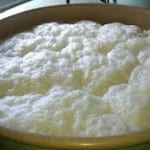 To open the last year of the second decade of the still-new millennium, I want to offer a somewhat bold suggestion. It may go against much you have learned about sake, but here it is: from here on out, drink more futsu-shu and honjozo. Not exclusively, mind you; just more.
To open the last year of the second decade of the still-new millennium, I want to offer a somewhat bold suggestion. It may go against much you have learned about sake, but here it is: from here on out, drink more futsu-shu and honjozo. Not exclusively, mind you; just more.
I’m not issuing a challenge; it’s not like that. It is nothing more than an idea, a suggestion for this year, for those that have the willingness, and the means – as dictated by availability. Starting in 2019, drink more honjozo and futsu-shu.
As a quick, new-year’s review, amongst the handful of ways to “divide all sake into two groups,” one is tokutei meishoshu, or “special designation sake,” and the rest is, well, everything else, i.e. sake that does not qualify for a special designation. And since it does not qualify for one of eight special terms, it’s kind of just regular sake.
That “regular sake” is called futsu-shu, which means – not surprisingly – regular sake, and comprises 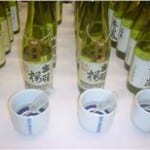 between 60 and 65 percent of the market. As the sake market continues its rapid shift toward more premium products, futsu-shu consumption is dropping fast. Tokutei Meishoshu, or “special designation” sake, is “special” by virtue of how much the rice was milled before brewing, and further divided up by whether or not distilled alcohol was used. You can learn a bit more about the grades here, and with an at-a-glance version here.
between 60 and 65 percent of the market. As the sake market continues its rapid shift toward more premium products, futsu-shu consumption is dropping fast. Tokutei Meishoshu, or “special designation” sake, is “special” by virtue of how much the rice was milled before brewing, and further divided up by whether or not distilled alcohol was used. You can learn a bit more about the grades here, and with an at-a-glance version here.
Very often Tokutei Meishoshu is called premium sake. This is fine, and technically speaking it is basically true. This line has been drawn by the industry, and we need to make sake easily understandable and approachable the world. But such nomenclature automatically implies that anything not in the Tokutei Meishoshu club is non-premium, which implies it is not so good – and that is simply a misperception. Or at least, it’s just not that simple.
To cut to the chase, let’s just state it: there is plenty of good, very enjoyable futsu-shu out there. Lots. Sure, there are some dodgy ones in the market as well. But many kura brew simple, straightforward, unassuming, not ostentatious futsu-shu that is easy to drink and very reasonably priced.
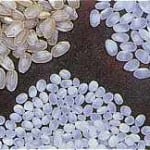 Also, as we go up the arbitrarily ascending scale of Special Designation sake, the first one we come to is honjozo. Like futsu-shu, distilled alcohol has been added, but the allowed limits are much lower. However, honjozo also has a minimum milling rate that must be observed (70 percent), usually rendering it more refined and delicate. And like futsu-shu, there is a lot of really good honjozo out there. Tons of it. Lakes of it.
Also, as we go up the arbitrarily ascending scale of Special Designation sake, the first one we come to is honjozo. Like futsu-shu, distilled alcohol has been added, but the allowed limits are much lower. However, honjozo also has a minimum milling rate that must be observed (70 percent), usually rendering it more refined and delicate. And like futsu-shu, there is a lot of really good honjozo out there. Tons of it. Lakes of it.
Honjozo is currently only about nine percent of the market now, but that market share is lamentably contracting very quickly, even more so than futsu-shu. Why is this? What is behind this rapid decline?
In my opinion, honjozo – which is, by the way, a full-fledged Tokutei Meishoshu – just has a bad rep. People misunderstand how enjoyable it can be, and miss its outstanding price performance. Consumers like things simple, and therefore tend to polarize things. So if someone wants to drink cheap sake, honjozo is passed over for futsu-shu. If someone wants to drink premium, just a few more coins will get them into the ginjo realm. So honjozo tends to get overlooked.
Regardless, what is important to bear in mind is that there are plenty of very good sake in each of these classifications, even though they are not the glitterati of the sake industry.
Often, we all tend to go right for the ginjo – and that includes this guy. And again, there’s nothing wrong 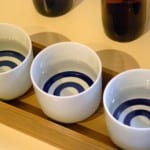 with that. It is certainly closer to a safe bet, and it is the fastest way to get someone interested in sake – if not instantly hooked. But the truth, especially with sake, is never that simple. There is really just so much great futsu-shu and honjozo out there that is well worth exploring. And that is what I want to encourage in 2019.
with that. It is certainly closer to a safe bet, and it is the fastest way to get someone interested in sake – if not instantly hooked. But the truth, especially with sake, is never that simple. There is really just so much great futsu-shu and honjozo out there that is well worth exploring. And that is what I want to encourage in 2019.
But really, why bother? Ginjo is a safe bet, more easily available overseas, and the word is easier to remember, even. Why put out actual effort to drink less expensive, less ostentatious sake? Here are five reasons.
One, it will help you expand your sake horizons. The more variety you include in the repertoire of sake that you drink, the more you will learn about sake in general. If you drink only ginjo, or only junmai styles, you’ll not learn nearly as much as if you include a good dollop of honjozo and futsu-shu into the mix.
Two, by trying a wide range of styles, when you find the types and grades of sake you enjoy the most, you’ll enjoy them even more after having made the rounds and come back to them. Worded less romantically, your ginjo will taste better if you drink futsuu-shu and honjozo from time to time.
Three, there are tons of great honjozo and futsu-shu out there. Oodles and oodles of ‘em. Certainly they are not as ostentatious as much ginjo-shu – they’re not supposed to be. But they can be extremely enjoyable, quite tasty, and very well suited to simple, unfettered drinking sessions. I cannot emphasize this point enough!
And four, if you want to learn about a particularly brewery and what their sake-brewing philosophy is all about, drink their futsu-shu. Sure, ginjo is good. But ginjo flavor profiles tend to converge; futsu-shu maintains much more of the character of the individual brewery. So by tasting a brewery’s futsu-shu, you’ll learn much more about their approach to sake brewing.
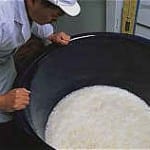 There is that fifth reason too, albeit a less appealing one: you’ll help the industry. The overall industry is in decline, and that decline is led by futsu-shu and honjozo: they drop every year. Drinking more of them will help bolster the industry and help make it easier for us to enjoy our Tokubei Meishoshu from amongst the currently active 1200 or so brewers. The more of them we lose, the less we have to choose from. So we can help keep things interesting by enjoying more futsu-shu and honjozo from time to time.
There is that fifth reason too, albeit a less appealing one: you’ll help the industry. The overall industry is in decline, and that decline is led by futsu-shu and honjozo: they drop every year. Drinking more of them will help bolster the industry and help make it easier for us to enjoy our Tokubei Meishoshu from amongst the currently active 1200 or so brewers. The more of them we lose, the less we have to choose from. So we can help keep things interesting by enjoying more futsu-shu and honjozo from time to time.
So next time, at least for 2019, resist the urge to go straight for the ginjo. Tokutei Meishoshu is great; junmai and the four ginjo types are of course wonderful sake, and they deserve to be in the spotlight as they are. But bear in mind that sake that do not qualify for those grades are no less wonderful sake, and drinking a bit more of them – in particular futsu-shu and honjozo – can be enjoyable and worthwhile in so many ways.
~~~~~~~~~~~~~~~~~~~~~~~~~~~~~~~~~~~~~~~~~~~~~~~~~~~~~~~~~~~~~~~~~~~~~~
Sake Professional Course in Chicago
April 23 ~ 25, 2019
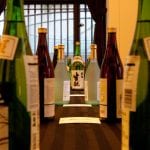 From Tuesday, April 23 to Thursday, April 25, 2019, I will hold the 30th North American running of the Sake Professional Course at the restaurant Sunda, in Chicago, Illinois. The content of this intensive sake course will be identical to that of the Sake Professional Course held each January in Japan, with the exception of visiting sake breweries.
From Tuesday, April 23 to Thursday, April 25, 2019, I will hold the 30th North American running of the Sake Professional Course at the restaurant Sunda, in Chicago, Illinois. The content of this intensive sake course will be identical to that of the Sake Professional Course held each January in Japan, with the exception of visiting sake breweries.
The course is recognized by the Sake Education Council, and those that complete it will be qualified to take the exam for Certified Sake Specialist, which will be offered on the evening of the last day of the course.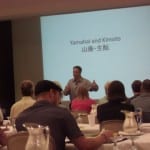
You can learn more about the course here, see the daily syllabus here,and download a pdf here. If you are interested in being in the mailing list for direct course announcements, please send me an email to that purport.
Testimonials from past graduates can be perused here as well.




